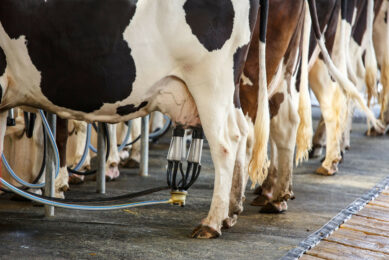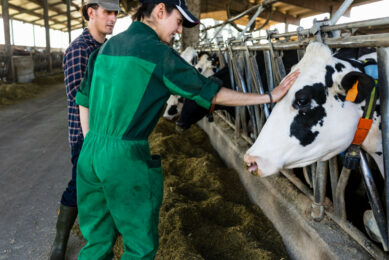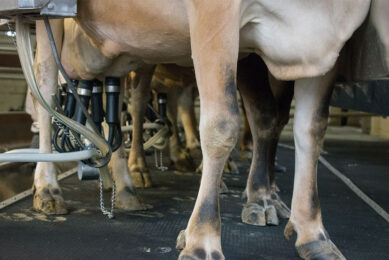What is the best surface to prevent lameness in dairy cows?
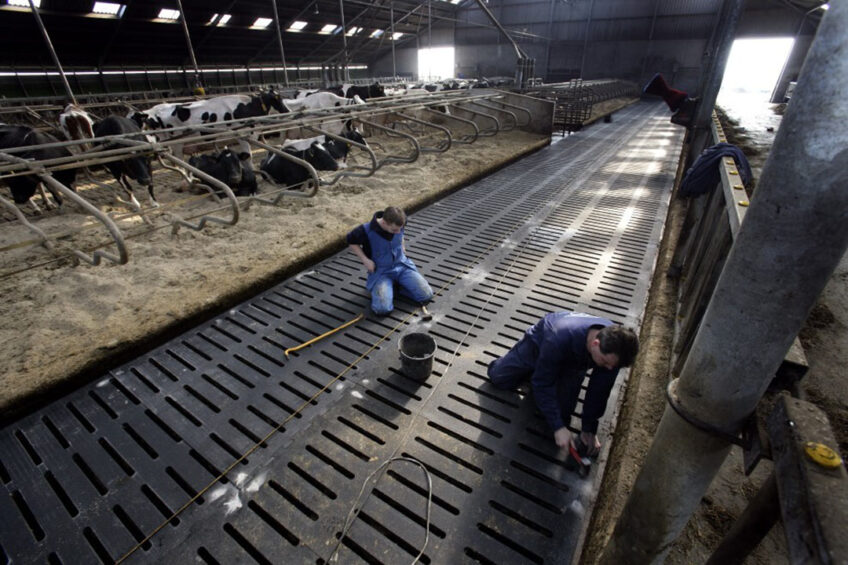
While grass is the best support surface for cattle, in many places it cannot be used, particularly when climate conditions are too harsh for grass to grow or be maintained or in housing systems that do not support access to a grass surface. In such circumstances, what other types of surfaces can be used and what role do they have in either promoting or preventing lameness?
Along with mastitis and infertility, lameness is one of the main welfare, health and production problems found in intensive dairy farms worldwide. Researchers from different universities investigated 5 different surfaces used in free-housing systems, highlighting the potential risk of lameness for each surface.
They compared 2 natural (grass and sand) and 3 artificial (rubber, asphalt and concrete) surfaces, comparing each flooring type’s influences on cows’ movement capabilities using all the available information relating to kinematics, kinetics, behaviour and posture in free-housed dairy cows.
Their findings also emphasise the importance of considering material properties and the design of any surface to move towards a more grass-like feel that reduces incidence of lameness and promotes animal welfare.
Main causes of lameness
Studies show 3 main causes of bovine lameness in free-housing systems:
- Low stall hygiene, which increases the risk of sliding, leading to injuries and boosting the risk of infections.
- Metabolic acidosis – a consequence of carbohydrate-rich diets.
- Mechanical imbalance, such as an increase in high loads at the joints and accelerated hoof wear due to hard and abrasive surface stall flooring.
Among these causes, prevalence data shows that hard and abrasive surfaces are behind most bovine lameness. Therefore, flooring type is worth considering in decisions to optimise dairy management and production processes.
Determining differences
In this study, researchers constructed an integrative analysis of functional ranges (IAFuR) based on an adapted version of the Movement Ecology Paradigm to evaluate the movement parameters involved in the risk of lameness in cows on the 5 different surfaces.
IAFuR provided a combined welfare status guide for the optimal (i.e., within the upper and lower limit) functional ranges for movement (i.e., posture, kinematics and kinetics), navigation (i.e., behaviour) and recovery capacities (i.e., metabolic cost). Thus, the purpose of the IAFuR was to determine the movement profile in each case, as well as to identify the main consequences of using alternative surfaces to grass.
Grass
Grass was found as the optimal surface because of 3 main attributes:
- (a) It mechanically provides a wide joint range, which boosts joint homeostasis.
- (b) It allows reliable and safe movement patterns while lowering metabolic costs.
- (c) It promotes a longer resting time and a lower prevalence of lameness (1-22.5%).
However, an interesting question that came from this result is whether these indicators remain true in poorly maintained pastures compared to well-managed indoor systems. The researchers highlighted that, although they did not have direct evidence about the movement parameters according to different types and quality of grass, it was logical to think that poorly maintained pasture would lose the optimal balance of the hoof horn wear and growth, in addition to the natural claw load.
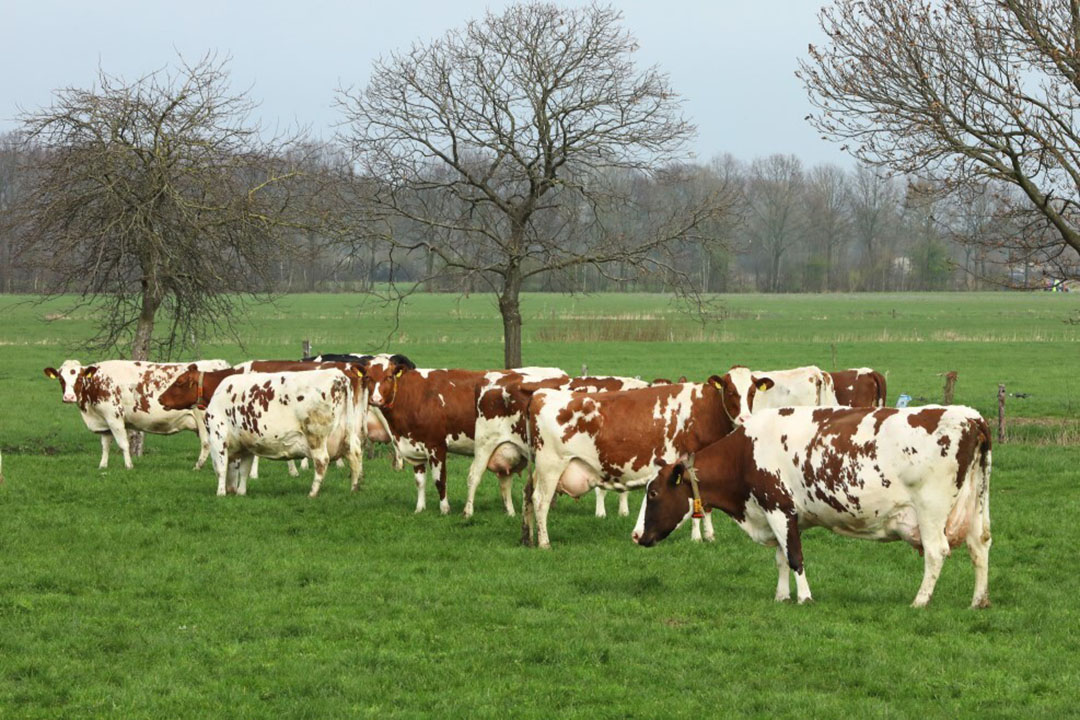
Therefore, the grass surface property, in this case, could resemble asphalt (i.e., higher abrasion, affecting the claw conformation) or concrete (i.e., lower load distribution, causing slipping and stiff gait).
In addition, grass is not always available as a surface for free-housing systems, either for climatic or economic reasons, creating the need for alternative surfaces that provide the best standards of animal welfare. Overall, this analysis may provide crucial information for the future engineering of artificially improved soil surfaces.
Sand
According to the study, sand appears to be the best natural alternative housing surface to grass – it presents excellent results in navigation and acceptable ranges in movement capacity. They also found that the prevalence of lameness (5-21.5%) is nearly as low as grass. Nevertheless, it presents the inconvenience of causing a higher metabolic cost for movement.
With respect to management, however, implementation poses strategic challenges. The frequent need for sand renewal implies finding solutions for good access to natural sources of sand, and special manure handling is necessary, which requires time and money. Thus, it is important to continue the search for artificial alternatives that could mimic the benefits of natural surfaces.
Rubber
Rubber appeared to be an acceptable artificial surface, but the friction property was a notable weakness. Lameness prevalence range on rubber surfaces is between 5% and 27.9%. The researchers pointed out that most studies report values around 20% as well as lower annual milk production than on sand, with no significant difference to that reported for hard and abrasive surfaces such as asphalt and concrete.
However, rubber remains an interesting alternative surface to the natural ones, if the following considerations are observed:
- (a) Providing optimal mechanical properties of friction, stiffness and deformation.
- (b) Landscape design with elements that help to familiarise the animal (since studies show that most cows are not confident on rubber surfaces).
Asphalt
Asphalt was reported to be highly abrasive for hooves and is not recommended in free housing of dairy cows due to the alteration to movement parameters that this surface generates given its high abrasion and the discomfort it causes to the animal. This situation is also confirmed by the high prevalence of lameness, which fluctuates between 13.3% and 40.9%.
Concrete
Concrete is the most used type of surface in livestock management due to its long-term durability and ease of cleaning. However, on this surface, the highest prevalence of lameness is reported (19.8-68.4%). Several claw disorders are observed more frequently with this type of flooring. Overall, this surface shows the worst indicators of movement, navigation and recovery capacities, generating insecurity, high metabolic cost and hoof stress.
Material properties and design
Besides evaluating different types of flooring systems, the researchers emphasised the importance of considering surface material properties and the design of the flooring system. The properties stated include friction, elasticity and heat flux (rate of heat energy transfer through a given surface).
“Besides the material, the surface design must facilitate easy cleaning, be durable and include an effective drainage system, among other factors,” they said. They also suggested future research focus on the interaction of friction, elasticity and heat flux on the animal’s internal state and its various movement parameters.
*This article is based on the original article by Medina-González P, K. Moreno and M. Gómez. 2022. Why Is the Grass the Best Surface to Prevent Lameness? Integrative Analysis of Functional Ranges as a Key for Dairy Cows’ Welfare. Animals, Vol 12, 2022, 496./10.3390/ani12040496.



